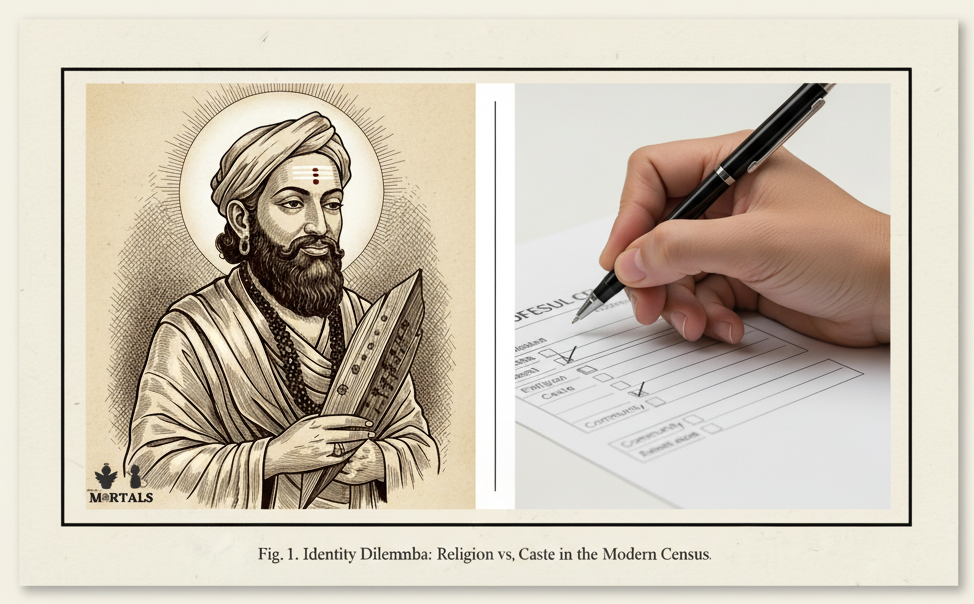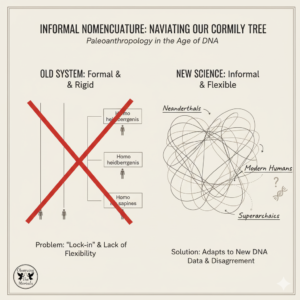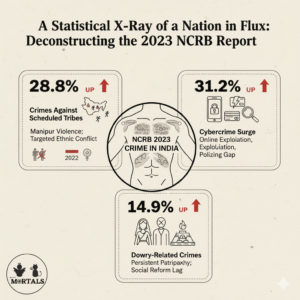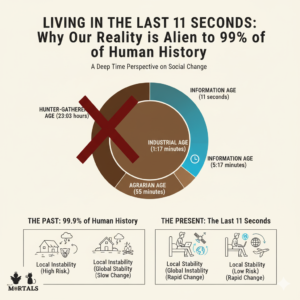For a government, a census is an exercise in data collection. For a community, it is a moment of profound choice and high-stakes political strategy. A recent series of meetings held by the powerful Lingayat Panchamasali community in Karnataka perfectly illustrates this. As the state prepares for a massive socio-economic survey, the community has been forced to confront a deep and unresolved tension at the heart of its identity: are they a unique religion founded on the anti-caste teachings of a 12th-century reformer, or are they a dominant caste bloc within the larger Hindu fold? Their decision reveals the fascinating and often pragmatic calculations that define identity politics in modern India.
The Information Box
Syllabus Connection:
- Paper 2: Chapter 3 (Indian Social System: Caste), Chapter 4 (Religion & Society), Chapter 8 (Social Change & Movements), Chapter 9.2 (Backward Class Movements)
- Paper 1: Chapter 4 (Political Anthropology), Chapter 5 (Anthropology of Religion)
Key Concepts/Tags:
- Caste Census, Identity Politics, Lingayatism, Veerashaivism, Dominant Caste, Religious Identity, De-Sanskritization
The Setting: Who, What, Where?
This case study is centered on the Lingayat Panchamasali, a demographically strong and politically influential sub-caste within the larger Lingayat community of Karnataka. The immediate context is an upcoming socio-economic and educational survey (caste census) being conducted by the state government. This has prompted community leaders and religious heads (seers) to convene and decide on a uniform nomenclature for the caste and religion columns. The backdrop to this is the long-standing socio-political movement demanding that Lingayatism, based on the teachings of the 12th-century reformer Basavanna, be recognized as a separate and distinct religion from Hinduism.
The Core Argument: Why This Study Matters
This is not just a local community meeting; it is a perfect illustration of how identity is actively constructed, debated, and mobilized in the political arena of modern India.
- The Census as a Catalyst for Politics: This case shows that a census is never a neutral act of counting people. It is a political event that forces communities to draw sharp lines and define themselves. The Lingayat Panchamasali’s decision to uniformly use their specific sub-caste name is a strategic move to consolidate their numbers and assert their distinct identity and political clout, separate from other Lingayat sub-groups.
- The Caste vs. Religion Dilemma: The community’s deliberations reveal a profound ideological conflict. The long-term goal for many is to be recognized as a separate religion—Lingayatism, which is philosophically anti-caste and anti-ritual. However, this is in direct tension with the immediate need to identify as a caste (“Panchamasali”) within the Hindu framework to effectively lobby for state benefits, such as inclusion in reservation categories.
- Pragmatism Over Ideology (For Now): The decision to write “Hindu” in the religion column—despite “heated discussions”—is a clear act of political pragmatism. It signals that, for the time being, the tangible benefits of being counted as a large and influential bloc within the Hindu fold are more politically valuable than the ideological assertion of a separate religious identity. It is a strategic pause in their larger movement, not an abandonment of it.
The Anthropologist’s Gaze: A Critical Perspective
- “De-Sanskritization” in Action: The broader Lingayat movement can be analyzed as a classic process of “De-Sanskritization.” This is where a community consciously rejects Brahmanical rituals and the broader Hindu identity to assert a distinct, often more egalitarian, identity based on a local saint or reformer (in this case, Basavanna). This case study beautifully illustrates the immense practical difficulties such movements face when they collide with the political and administrative structures of the modern state.
- The State’s Role in Shaping Identity: An anthropologist would note how the state, through the very design of the census form with its fixed columns for “caste” and “religion,” actively shapes and hardens what might otherwise be more fluid identities. The existence of these boxes forces communities to make definitive, strategic choices that have real-world consequences.
- Internal Factionalism: The article mentions meetings in two different cities and references multiple religious Peethas. This hints at the internal factionalism and leadership competition within the community. An anthropological analysis would probe deeper, exploring how different seers and political leaders might be using the census issue to consolidate their own influence and authority over this large and powerful community.
The Exam Angle: How to Use This in Your Mains Answer
- Types of Questions Where It Can be Used:
- “Analyze the relationship between caste and religion in contemporary India.”
- “The caste census in India is as much a political exercise as it is a statistical one. Discuss.”
- “Discuss the dynamics of dominant caste politics with suitable examples.”
- Model Integration:
- On Caste and Politics: “The role of a caste census in identity mobilization is clearly visible in the recent decision by Karnataka’s Lingayat Panchamasali community. Their move to adopt a uniform nomenclature for the census is a strategic effort to consolidate their demographic strength to enhance their political bargaining power.”
- On Caste vs. Religion: “The complex interplay between caste and religious identity is evident among the Lingayats. Their long-standing demand for a separate religious status, based on Basavanna’s teachings, is often in tension with the political pragmatism of identifying as a caste within the Hindu fold to leverage demographic numbers, as seen in their recent deliberations over the state’s caste census.”
- On Social Change: “The Lingayat movement can be seen as a process of ‘De-Sanskritization’ aimed at creating a distinct religious identity. However, as the community’s decision to temporarily identify as ‘Hindu’ for the caste census shows, such social movements must constantly negotiate their ideological goals with the political realities of the modern state.”
Observer’s Take
This case study is a fascinating window into the very soul of identity politics in India. It reminds us that identity is rarely a fixed, ancient truth handed down through generations. More often, it is a fluid, dynamic, and strategic choice that is constantly being debated and negotiated in the public arena. The Lingayat Panchamasali community is caught in a profound tug-of-war between its revolutionary, anti-caste past and its politically pragmatic present. Their decision reveals a powerful truth: in the great theatre of the modern Indian state, the question “Who are you?” is never a simple one; it is always deeply, and strategically, political.





